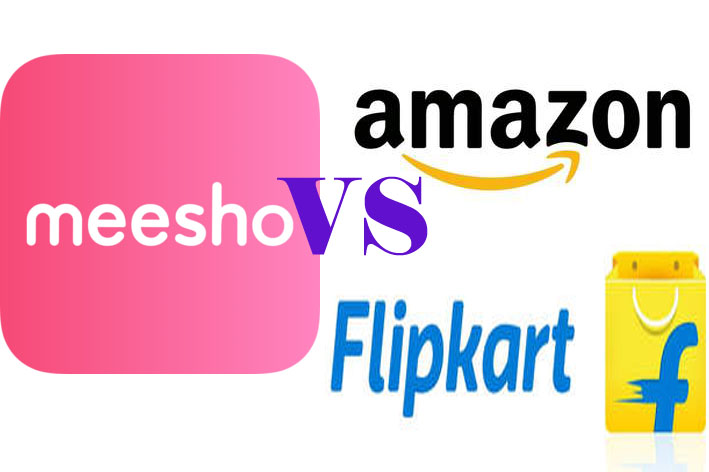Meesho Achieves Profitability; Will This Milestone Help E-Commerce Fight Big Giants And Make It Survive?
In FY22, the company's revenue was about $400 million. Its current annual revenue is about $800 million. Meesho, which does not charge seller fees on its central marketplace except for select brands under its recently formed Meesho Mall vertical, gets around 80% of its revenue from logistics-related services. The rest comes from advertising.

At the start of the fresh week, e-commerce startup Meesho announced that it had become profitable for the first time on a consolidated profit after tax (PAT) basis in July. In addition, chief executive Vidit Aatrey stated that the firm plans to continue expanding its profit pool in the following months and quarters. The firm had a PAT in “single-digit crore rupees” for July.
The firm believes that the aim is to grow on this profit rather than record it and that people will see the firm pouring money back into the business after being conservative for the past several months. The caveat is that the business will spend while being profitable, and it will do so in areas such as expanding platform categories.
How is the profitability being achieved by the giant e-commerce player Meesho?
Meesho has taken many steps to reduce costs and improve its financial health since the beginning of the year. It laid off 251 employees from the company’s main segment in its second round of layoffs. Aatrey told staff in a May memo that the company had made “judgement errors” in over-hiring ahead of the curve. In an attempt to justify the job layoffs, he stated in the memo that the firm is now dealing with the harsh truth of aligning the people costs with the new projections for the business.
Some points of positivity for the company.
Increase in revenue.
In FY22, the company’s revenue was about $400 million. Its current annual revenue is about $800 million. Meesho, which does not charge seller fees on its central marketplace except for select brands under its recently formed Meesho Mall vertical, gets around 80% of its revenue from logistics-related services. The rest comes from advertising.

Decrease in expenses.
It was previously claimed that the firm had reduced its cloud expenditures by roughly 50%, which may have pushed the Bengaluru-based business closer to profitability. SoftBank and Meta-backed Meesho reported a 43% increase in order volume and a 54% increase in revenue over the previous year. He said that in the previous 12 months, 85% of the orders had come from returning customers, reflecting the platform’s client retention rate.
Meesho stated that it had reduced customer acquisition expenses by more than 80% yearly while retaining over 140 million monthly active users (MAU). The company has over 40 million monthly transactional users (MTU).
Reduction in cash burn rate.
Meesho’s cash burn rate has decreased dramatically since its high in 2022, and the e-commerce business hopes to expand further while being profitable. Meesho cut its burn by half last year; it was roughly $5 million then and projected to fall further in the July-September quarter.
After reading all the above, one can be pretty sure that the path to Meesho’s success is now clear. However, it’s not that easy, unfortunately. Let’s try to find out what are the bumpy points in Meesho’s road to success.
Lower AOV.
Meesho’s profit after tax was in the low single digits (Rs crore). This was on the heels of revenues of roughly $400 million (around Rs 3,280 crore) produced by the firm between January and June, demonstrating that the road to profitability remains bumpy. The most outstanding efficiency has resulted from a 70% reduction in CACs. The CAC was over Rs 250 two years ago, currently around Rs 50-60. Even when the firm reduces market expenditures, they maintain the same level of throughput.

According to experts, the CAC decrease is especially crucial because Meesho’s average order value (AOV) is substantially smaller at approximately Rs 400-450, compared to roughly Rs 1,100-1,400 for larger competitors like Amazon and Flipkart.
Question mark on the pilot project.
The company said that its grocery vertical was still in an “experimentation phase” and that future growth would rely on the vertical’s unit economics. They also noted that just a few cities were now using it. Meesho relaunched Farmiso as Meesho Superstore and integrated Farmiso into its main application last year. It is still early to say whether this pilot project will give fruitful results to Meesho or if it has to close its doors.
Dealing with premium categories needs extreme vigilance.
Meesho, which currently has over $400 million in the bank, is also trying to buy businesses that complement its own. This might imply that Meesho would hunt for participants in categories like as electrical appliances, smartphones, and/or others, where it is mainly missing, as well as users at various price points.

Now we all know how Meesho is famous for delivering the wrong products. Though it is the witty attitude of the merchant on the website, it is the platform’s duty to be vigilant about their sellers and resellers. It is painful to receive the wrong product in apparel, utensils, shoes etc., but receiving such an event in the electronics and smartphone category is highly disheartening and unavoidable. So before investing in these categories, Meesho needs to make their platform more vigilant about whom they are onboarding.
Conclusion.
In the end, we can give good hopes to Meesho and expect that the company achieves profitability before going into the public markets (IPO) and save the investors from dying in the middle of the ocean.




